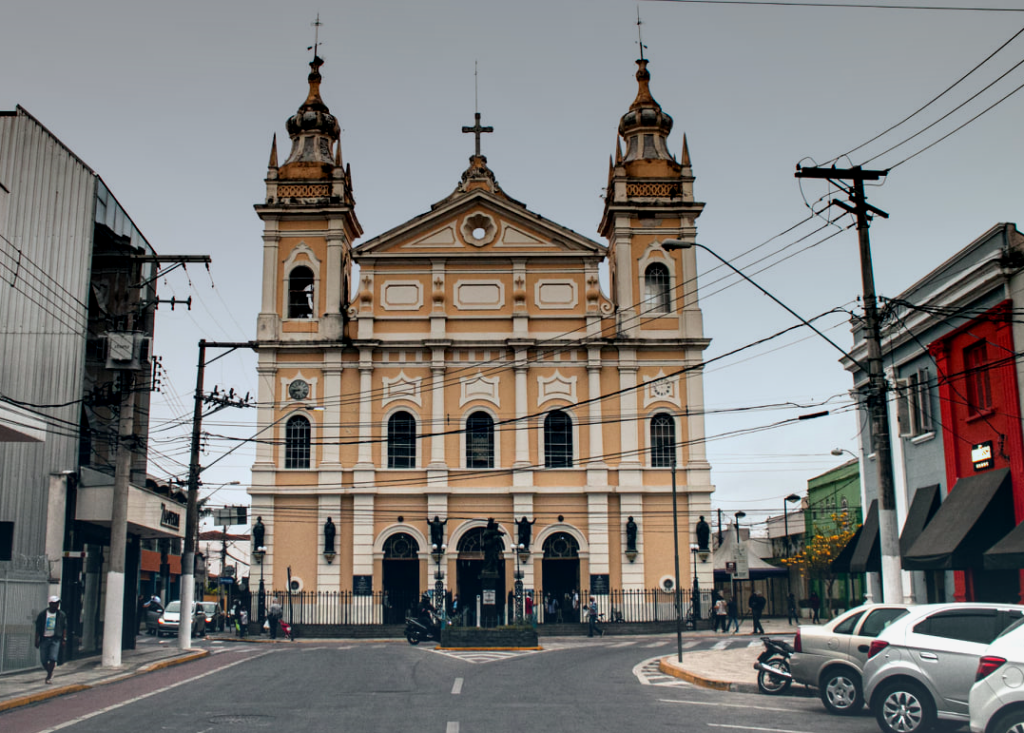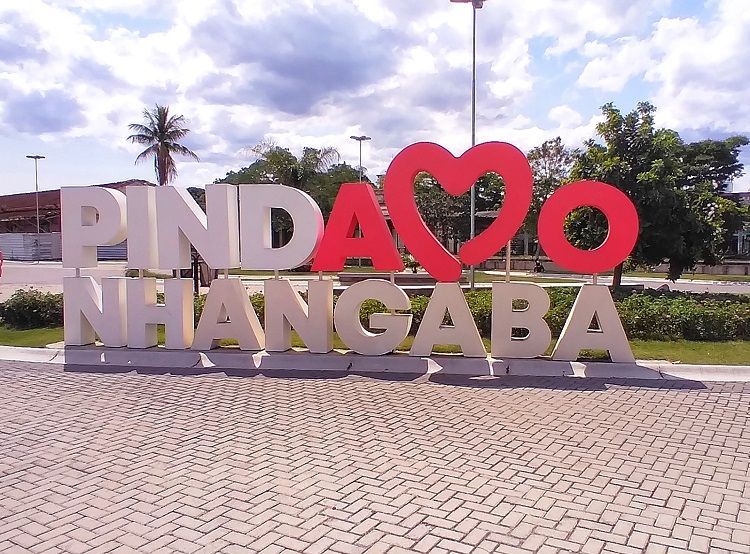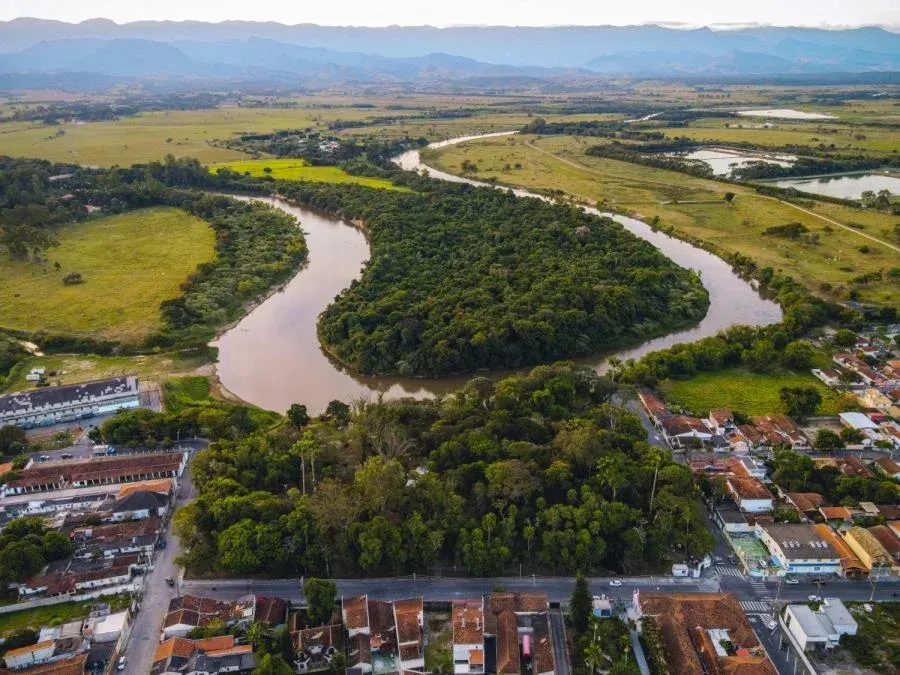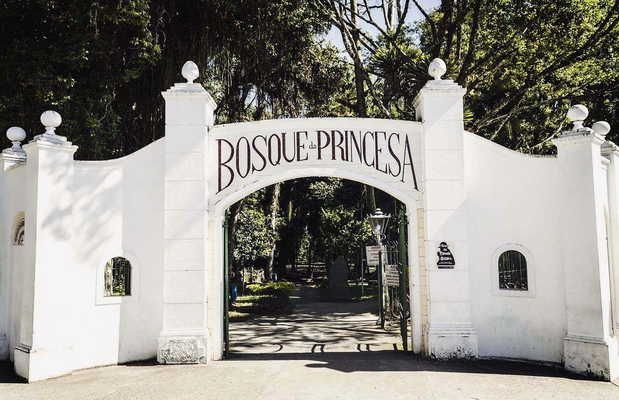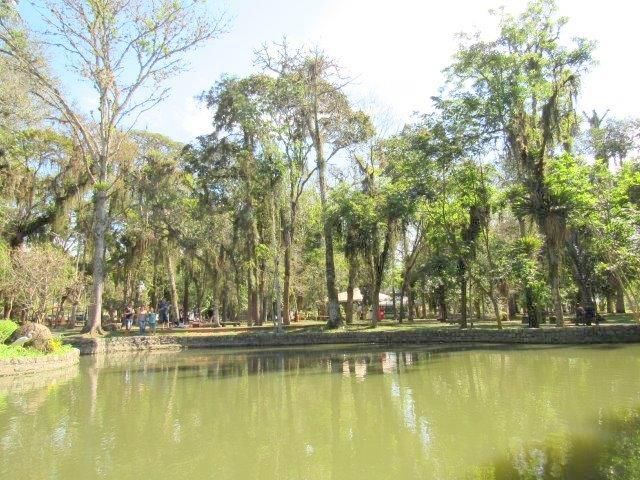Pindamonhangaba - SP
On this page, the Portal Peregrino da Esperança presents the city of Pindamonhangada, located in the interior of São Paulo, which stands out both for its historical importance and for its role in the economic, cultural and social development of the Paraíba Valley. The chosen Patron Saint was Our Lady of Good Success.
🕊️ “When all seems lost, it will be the happy beginning
of complete restoration.” (Our Lady of Good Success)
Features of the City of Pindamonhangaba - SP
Pindamonhangaba, located in the interior of the state of São Paulo, is a city that stands out both for its historical importance and for its role in the economic, cultural and social development of the Paraíba Valley. Its name, of Tupi origin, carries the meaning of “place where fishhooks are made”, a direct reference to the indigenous traditions that inhabited the region before the arrival of the colonizers. The city has a rich history, marked by its participation in important economic cycles in the country, such as the gold and coffee booms and, later, industrialization, which profoundly transformed its urban landscape and social dynamics.
Since colonial times, Pindamonhangaba has established itself as a strategic point due to its privileged location between coastal cities and the interior of São Paulo, becoming a transit route and a means of transporting goods. Throughout the 18th and 19th centuries, the city's economy was consolidated based on agriculture, especially coffee cultivation, which boosted the region's growth and left behind beautiful historic buildings, farms and mansions that still preserve part of the memory of that period. With the decline of the coffee cycle, Pindamonhangaba, like other cities in the Paraíba Valley, underwent a process of economic diversification, embracing industry and services, which ensured its modernization and sustainable development.
The city is proud of its cultural heritage and traditions, which are reflected in popular festivals, religious events, cultural activities and the preservation of its history through museums, cultural spaces and monuments. In addition, Pindamonhangaba stands out for the quality of life it offers its residents, thanks to the combination of a well-developed urban infrastructure with the presence of green areas, parks and leisure spaces that value contact with nature and promote the well-being of the population. The Serra da Mantiqueira, which frames part of the municipality, offers not only landscapes of rare beauty, but also opportunities for ecological tourism, adventure sports and leisure.
The city's vocation for hospitality is also reflected in its participation in the Caminho da Fé, welcoming pilgrims who seek not only a religious destination, but also an experience of overcoming, introspection and spirituality. Pindamonhangaba, therefore, is not just a geographical point in the interior of São Paulo, but a place where history, culture, nature and development come together in harmony. It is a city that, while preserving its roots, projects itself into the future, keeping alive the identity of a people who are proud of their past and continue to build, day after day, a path marked by hospitality, faith and the constant search for growth and quality of life.
The presence of Pindamonhangaba on the Águas da Prata branch of the Caminho da Fé represents one of the most significant transitional moments of the pilgrimage, not only because of the change in the geography of the route, which leaves behind the intense challenges of the Serra da Mantiqueira, but also because of the welcome that the city offers to hikers who arrive driven by faith, overcoming obstacles and the search for an encounter with themselves and the divine. The city, located in the Paraíba Valley, becomes a strategic point on the route of pilgrims who choose to follow the branch that descends from Campos do Jordão, offering a stage where the terrain becomes less rugged, but without losing the deep spiritual meaning that permeates the entire Caminho da Fé.
Throughout its history, Pindamonhangaba has established itself as a city that embraces pilgrims, offering not only infrastructure but also a welcoming environment where each hiker finds support, rest and encouragement to continue their journey. The landscape surrounding the arrival and passage through Pindamonhangaba is marked by the transition from the mountains to the plains of the valley, providing a contrast that also symbolizes the alternation between the physical challenges overcome in the mountains and the serenity that the trail offers from this point on. It is a stretch that invites reflection, gratitude and strengthening of faith, as it allows the pilgrim to look back, contemplating everything that has already been overcome, and to look forward, renewing their goals.
The pilgrims' passage through the city also strengthens the local community's ties with spirituality and the tradition of hospitality that characterizes the cities that are part of the Caminho da Fé. It is common to find residents who are willing to help, whether by offering water, words of encouragement, blessings or even small gestures of solidarity that, for those on the journey, become extremely valuable and moving. Thus, Pindamonhangaba is not just a geographical point on the route, but a space where faith manifests itself in concrete ways in human relationships, in welcoming and sharing.
By joining the Águas da Prata branch, Pindamonhangaba reaffirms its role within this great network of spirituality, overcoming and devotion that connects several cities, landscapes and people towards Aparecida. It is a stretch that, although it marks the end of the most intense challenges of the mountains, does not represent the end of the spiritual journey, but rather the continuation of a path that is made not only by the steps taken, but, above all, by the inner transformation that each kilometer traveled provides. In this way, Pindamonhangaba becomes, on the Path of Faith, a symbol of passage, renewal and hope, welcoming each pilgrim with the same tenderness and strength that moves those who choose to follow this journey of faith.
The history of the Pindamonhangaba Parish Church, dedicated to Our Lady of Good Success, is deeply intertwined with the formation and development of the municipality itself, reflecting not only the religiosity of its people, but also its historical and cultural trajectory since the beginning of colonization. The origin of the church dates back to the 17th century, when the first colonizers, driven by faith and the need to establish a religious center, built a chapel dedicated to the Virgin of Good Success. This small temple, initially simple and modest, was the starting point not only of local religious life, but also of the urban growth of the city, which was organized around the church, as was customary in colonial towns of the time.
Over the years and with the increase in population, the small chapel underwent successive expansions and renovations, reflecting the prosperity of the region, especially during the gold and coffee booms that brought wealth and development to the Paraíba Valley. The construction of the current main church was the result of a collective effort by the community, which, driven by faith and the desire to build a dignified space for their religious practices, spared no effort to build a temple that was not only functional, but also beautiful and imposing. Its architecture, marked by neoclassical elements and details that reflect the influence of Portuguese traditions and the São Paulo Baroque, has become a true historical and artistic heritage, which holds within its walls centuries of devotion, stories and memories.
The Igreja Matriz de Nossa Senhora do Bom Sucesso has always played a central role in the lives of the residents of Pindamonhangaba, being the stage for the main religious celebrations, such as masses, patron saint festivals, processions and sacraments that mark the lives of families, such as baptisms, weddings and confirmations. Its importance goes beyond the strictly religious aspect, as it has also established itself as a symbol of the city's cultural identity, being a reference not only for the faithful, but also for all those who recognize the inestimable value of preserving its heritage. The bell that echoes from its tower, the image of the patron saint that welcomes devotees and the altar that has witnessed generations of prayers and thanksgiving are living parts of local history.
At each celebration and community gathering, the Igreja Matriz reaffirms its role as the center of Pindamonhangaba’s spiritual life, keeping alive the tradition of the Catholic faith that has accompanied the city’s formation since its beginnings. It is more than a building made of stone and mortar; it is a space where the sacred and the everyday meet, where the past and the present embrace, and where each believer finds not only the continuity of a tradition, but also a place of welcome, reflection, and renewal of hope. Thus, the history of the Igreja Matriz de Nossa Senhora do Bom Sucesso is intertwined with the history of Pindamonhangaba itself, bearing witness to centuries of faith, struggles, transformations, and love of a people deeply connected to their roots and their spirituality.
Photographs of the City of Pindamonhangaba - SP
